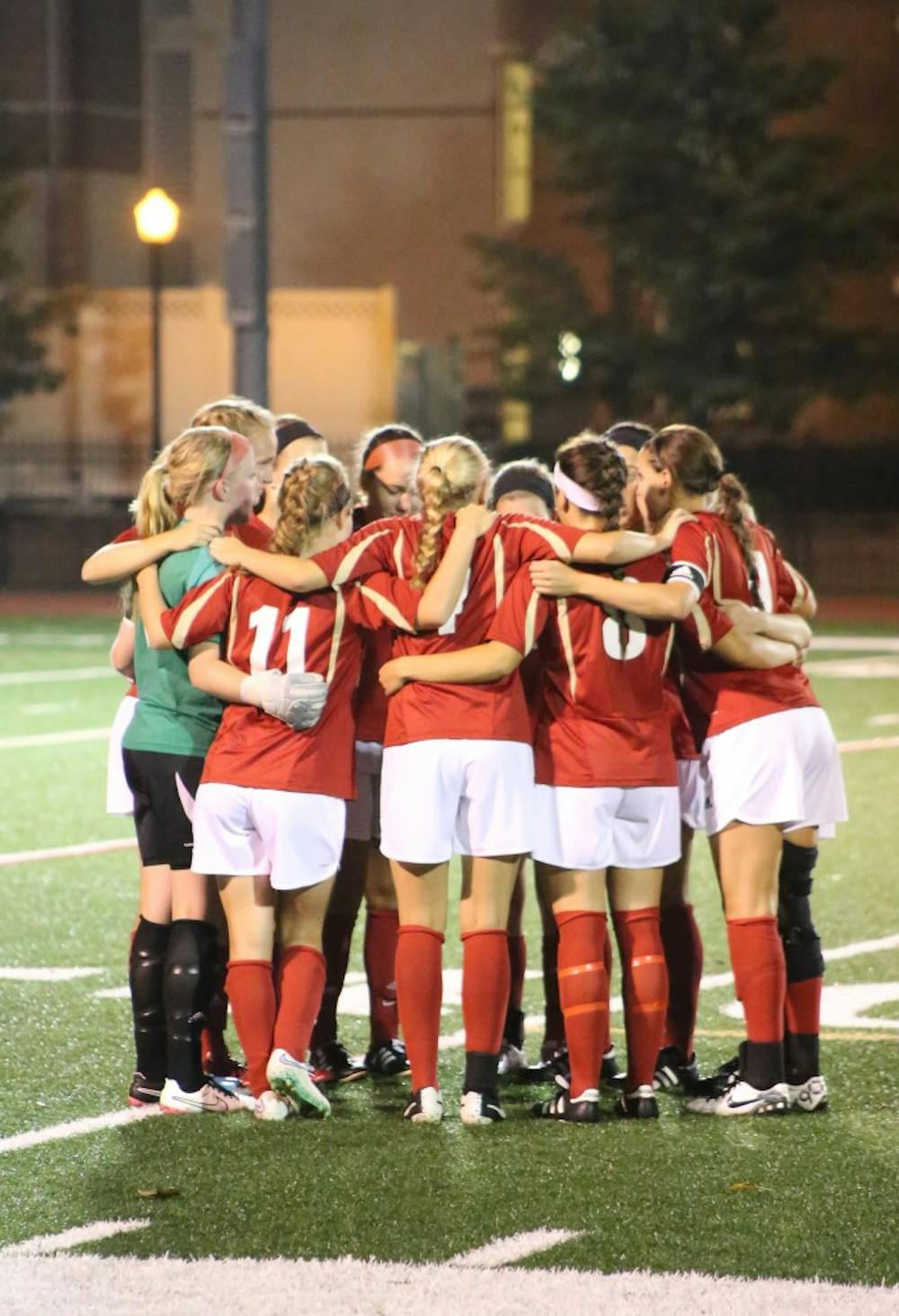In the fall of 2011, then-freshman Alex Ancona was enjoying her first year as a defender for the Otterbein women’s soccer team. She played in the first three games of the season and was set to have a solid campaign for the Cardinals.
Then, during the fourth game of the year, Ancona suffered a season-ending ACL tear. Little did she know, that this knee injury that cut her freshman season short, would give her new life four years later.
It just so happened that the situation with her injury qualified her to petition, and to obtain, a medical hardship.
“Last year, I was talking to my coach about possibly returning and how I had to apply to grad school but how I had to take a year off in order to apply to grad school, so I thought it would be worth playing soccer one more year,” Ancona said. “I talked to (women’s soccer head coach) Brandon (Koons) about it and he said that if I save one class that I absolutely need in order to graduate, like one that’s in the curriculum, then I won’t have to pay full tuition, I would only have to pay for that class and play soccer.”
Ancona’s situation isn’t one that is uncommon.
Every year, numerous student-athletes from Otterbein alone petition for a medical hardship. Not to be confused with a redshirt like at the Division I level, a medical hardship at Division III has very strict rules when it comes to qualifying for another year of athletic eligibility.
“There’s a lot of confusion about the medical hardship,” said Joe Wilkins, whom has worked with the Otterbein Athletic Training program for the last 10 years. “For terminology, it’s easier to call it a redshirt, but I think that is one thing that creates a lot of confusion, both with the athletes and a lot of the coaches as well, about what is a qualifying event to get an extra year, and then what’s allowable once you decided that the season needs to be shut down in an attempt to get that year back, because it’s significantly different than getting a performance redshirt at the Division I or II level.”
According to Wilkins, in order for an athlete to qualify for a medical hardship, their injury has to be season-ending in nature, they have played in no more than three events or one-third of their regular season schedule, whichever is greater, the injury had to have occurred within the first half of the season and the extra season can’t push the student-athlete to exceed 10 full-time semesters or 15 full-time quarters.
Once an athletic trainer, a physician, or even a coach fills out official paperwork, it is sent to the conference office. After the conference office receives the paperwork, they must then determine whether the student-athlete qualifies for a medical hardship and pass the information on to the NCAA for approval.
When it comes to how often a medical hardship is accepted, it varies by sport.
”In football, you see the medical hardship a good bit,” Wilkins said. “I would say that it is the most common. I can’t remember a year in 10 years covering football where we didn’t fill out at least a handful of them.
“For the other sports, it’s really hit or miss. Some will go a very long time without ever having any, and then they’ll get in a run where they’re doing two or three seemingly every year.”
Even though women’s soccer isn’t seen as a sport that gets many medical hardships, Ancona is eager to see what this extra season will bring for her.
“I was very excited when I found out I got a fifth year,” Ancona said. “Going into it, I knew that I was eligible to do it, so I was just excited that I had made the decision to do it.”








